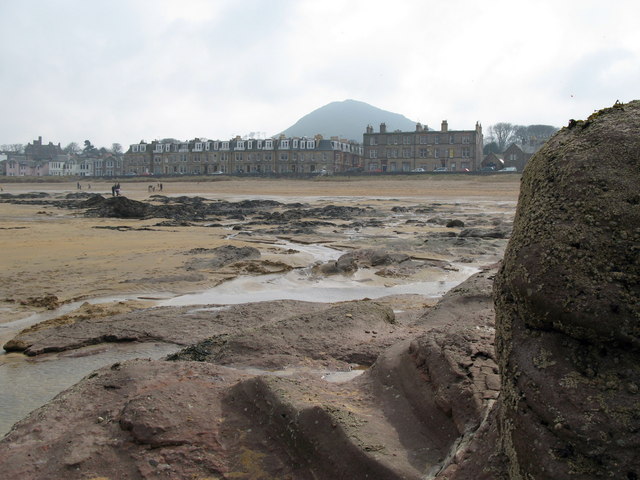There have been a number of films made over the years about the relationship between Queen Elizabeth I and her first cousin once removed Mary Stuart, better known as Mary Queen of Scots. One of the more recent films stars Saoirse Ronan as Mary and Margot Robbie as Elizabeth. Here are three of the locations used in the film.
The film opens with Mary’s return to Scotland from France, where she had briefly been Queen, but her reign ended with the death of her husband Francis. The ship carrying Mary landed at Leith on the outskirts of Edinburgh in 1561. The beach used in this scene in the film is Seacliff Beach, North Berwick, a pleasant seaside town in East Lothian, a bit further south.
After landing at Leith Mary makes her way to Holyrood House in Edinburgh. The exterior of Holyrood in the film was shot at Blackness Castle near Linlithgow. Situated on a promontory on the south bank of the River Forth, just upstream from the Forth Road Bridge, Blackness Castle is a 15th century castle owned by Historic Environment Scotland and is open to visitors year round. The castle was originally built as a residence for the Crichtons, one of Scotland’s most powerful families at the time.

Blackness Castle - geograph.org.uk - 1238628. Photo by Mike Pennington, via Wikimedia Commons.
Meanwhile, Elizabeth is based at Hampton Court Palace on the outskirts of London. The exterior of the palace in the film was represented by the magnificent Hardwick Hall near Chesterfield in Derbyshire. We see the tall facade of the building and the formal garden fronting it. Hardwick Hall is owned by the National Trust, and among its treasures are some fine tapestries. The cafe downstairs offers a range of tasty meals, coffees, teas and cakes. The property is fully open until the end of October, and partially open thereafter.
 |
| Hardwick Hall - geograph.org.uk - 3339472. Photo by Chris Heaton, via Wikimedia Commons. |








